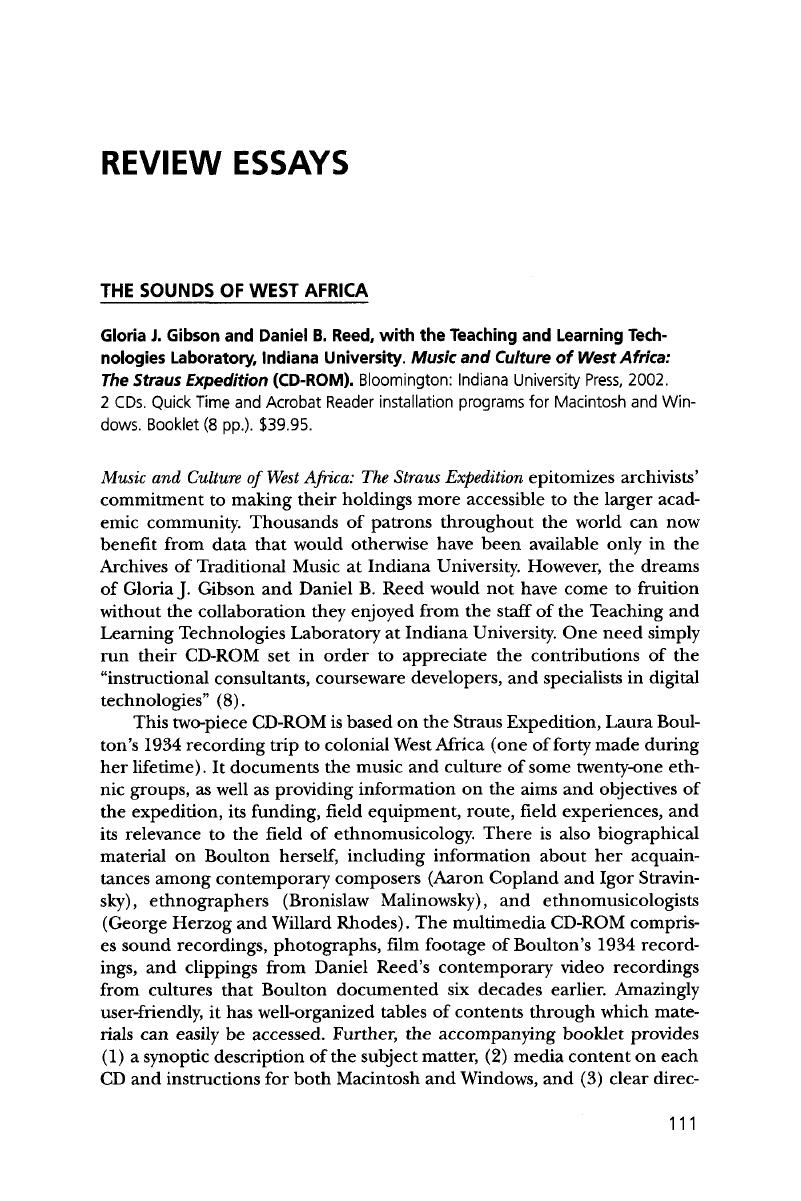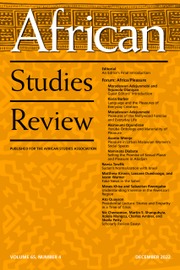No CrossRef data available.
Article contents
The Sounds of West Africa
Published online by Cambridge University Press: 23 May 2014
Abstract
An abstract is not available for this content so a preview has been provided. Please use the Get access link above for information on how to access this content.

- Type
- Review Essays
- Information
- Copyright
- Copyright © African Studies Association 2003
References
Adjaye, Joseph, and Andrews, Adrienne R., eds. 1997. Language, Rhythm, and Sound: Black Popular Cultures into the Twenty-First Century. Pittsburgh: University of Pittsburgh Press.Google Scholar
Agawu, Kofi. 2003. Representing African Music: Postcolonial Notes, Queries, Positions. New York: Routledge.Google Scholar
Ben-Amos, Paula Girshick. 1999. Art, Innovation and Politics in Eighteenth-Century Benin. Bloomington: Indiana University Press.Google Scholar
Charry, Eric. 2000. Mande Music: Traditional and Modern Music of the Maninka and Mandinka of Western Africa. Chicago: University of Chicago Press.Google Scholar
Clifford, James. 1988. “On Ethnographic Authority.” In The Predicament of Culture: Twentieth-Century Ethnography, Literature, and Art. Cambridge: Harvard University Press.Google Scholar
DeMott, Barbara. 1982. Dogon Masks: A Structural Study of Form and Meaning. Ann Arbor, Mich.: UMI Research Press.Google Scholar
Giddens, Anthony. 1981. The Contemporary Critique of Historical Materialism. Berkeley: University of California Press.Google Scholar
Griaule, Marcel. 1965. Conversations with Ogotemmêli: An Introduction to Dogon Religious Ideas. London: Oxford University Press.Google Scholar
Knight, Roderic. 1984. “Music in Africa: The Manding Contexts.” In Performance Practice: Ethnomusicological Perspectives, edited by Béhague, Gerard, 53–90. Westport, Conn.: Greenwood Press.Google Scholar
Koetting, James. 1984. “Hocket Concept and Structure in Kasena Flute Ensemble Music.” In Selected Reports in Ethnomusicobgy 5: Studies in African Music, edited by Nketia, J. H. Kwabena and DjeDje, Jacqueline Cogdell. Los Angeles: University of California, Institute of Ethnomusicology.Google Scholar
Kubik, Gerhard. 1999. African and the Blues. Jackson: University Press of Mississippi.Google Scholar
Okpewho, Isidore. 1998. Once Upon A Kingdom: Myth, Hegemony, and Identity. Bloomington: Indiana University Press.Google Scholar
Oliver, Paul. 1970. Savannah Syncopators: African Retention in the Blues. New York: Stein and Day.Google Scholar
Rice, Timothy. 1987. May It Feel Your Soul: Experiencing Bulgarian Music. Chicago: University of Chicago Press.Google Scholar
Waterman, Christopher. 1990. Jùjú: A Social History and Ethnography of an African Popular Music. Chicago: University of Chicago Press.Google Scholar
Waterman, Christopher. 1993. “Jújù History: Toward a Theory of Sociomusical Practice.” In Ethnomusicology and Modern Music History, edited by Blum, Stephen, Bohlman, Philip, and Neuman, Daniel, 49–67. Urbana: University of Illinois Press.Google Scholar


